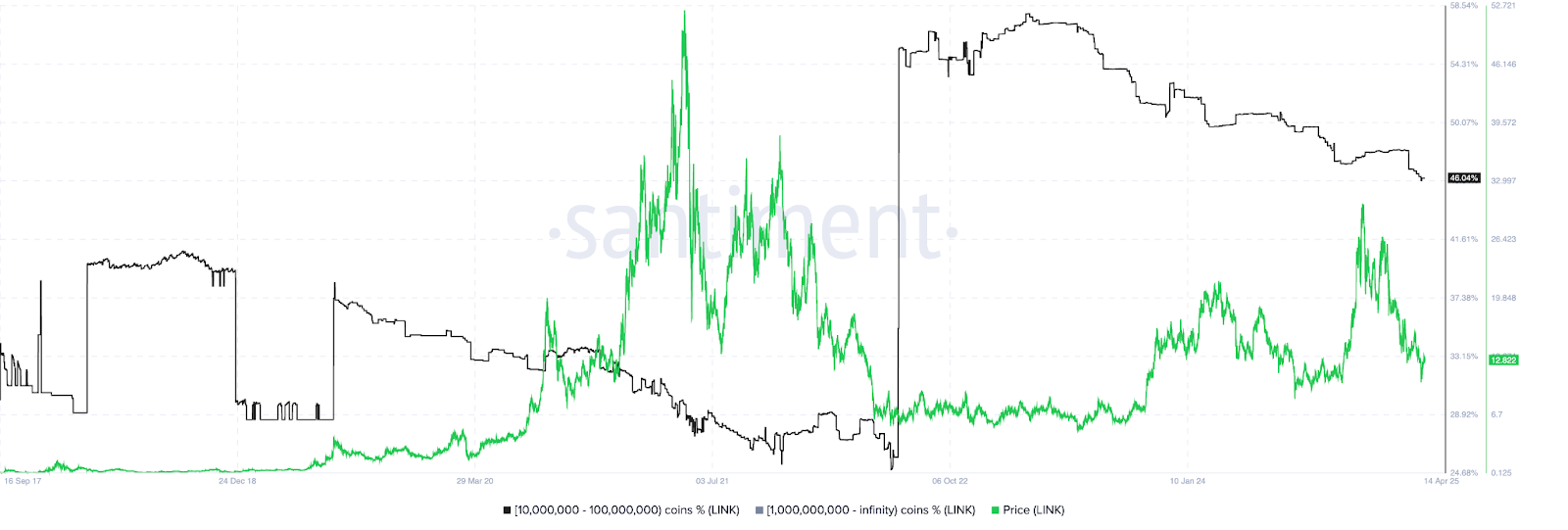- CapMoney adopted Chainlink Price Feeds to stabilize its cUSD and provide live price data in DeFi platforms.
- Chainlink oracles for decentralized verification aid in maintaining the dollar stability of cUSD, as well as automated smart contract abilities.
- LINK token continues to decline as whales offload tokens while active addresses decrease to undermine the market.
CapMoney has revealed that it will use Chainlink Price Feeds on Ethereum to accomplish the stablecoin peg to the U.S. dollar. The stablecoin, tailored for cross-border payments and remittances, aims to offer consistent pricing data and improved security in decentralized finance (DeFi) environments.
.@capmoney_ has integrated Chainlink Price Feeds on @ethereum to power its decentralized, interest-bearing cUSD stablecoin.https://t.co/w1qnPKTgzw
Backed by fully collateralized and restaked assets, cUSD uses Chainlink to provide stronger assurances that stablecoin minting and… pic.twitter.com/z7QAgSrIVT
— Chainlink (@chainlink) April 17, 2025
Currently, Chainlink Price Feeds are popular due to their decentralization and impossibility of being gamed. They extract data from over 20 CEXs and DEXs aggregators and merge the data using volume-weighted averages. These prices are further validated through consensus by other parties known as security-audited nodes.
In practice, the smart contracts of cUSD demand a market change or a new price update period when it is due. Oracle nodes gather and process price information from the outside environment, exclude outliers, and report results. The Chainlink data gets pooled, and the average value is published on-chain so that cUSD remains securely pegged and reachable even in the case of volatility or extreme load.
DeFi Utility Expands as cUSD Gains New Capabilities
By using Chainlink infrastructure, cUSD introduces itself for integration across a large number of DeFi platforms. Automated market makers, lending platforms, and yield farming systems, which rely on reliable and trustworthy pricing data, can now integrate with cUSD.
Chainlink’s programmable oracle allows real-world events to cause smart contract transactions to occur. CapMoney plans to optimize the settlement and change collateral requirements, thus expanding the possibilities of cUSD’s use cases even more.
The integration benefits cUSD not only by providing operational stability but also by setting a benchmark that other stablecoin issuers on Ethereum should follow.
Chainlink Faces Pressure Despite Strategic Adoption
However, the native token of Chainlink, LINK, has failed to maintain an upward trajectory even with the collaboration with CapMoney. Currently, LINK is at $12.15, showing a daily drop of 0.74% and relatively bearish from the peak at around 30.86$ recorded in December.
However, onchain indicators point to a negative trend in the fundamentals. CryptoQuant shows that Active Addresses for Chainlink have declined to about 3,200 this week, which is 72% less than the 11,400 recorded in December.

Source: CryptoQuant
The Active Address metric, which tracks the number of different wallets engaging with the LINK token, may also rise when the price does. Further decline implies waning user interest and diminishing trust in the prospect.
Santiment also shows that large holders have also started selling more. Many large addresses with between 10 million to 100 million LINK have been selling through between February and mid-April. These wallets, at the moment, possess 46% of all LINK tokens that are in circulation. This has made downside pressure to be common in this whale group due to the exit activity.

Source: Santiment
LINK is close to the support level of $10. It is expected to break below this level and, thereby, bring more losses if bearish momentum persists. Traders are now waiting for some positive signal that might stimulate the desire of users and large whales to interact with the platform.
